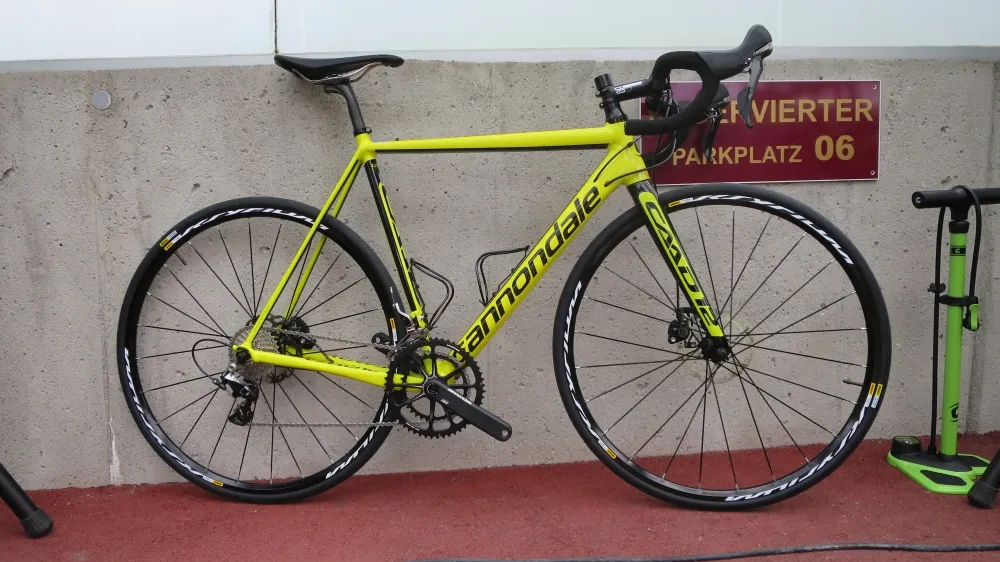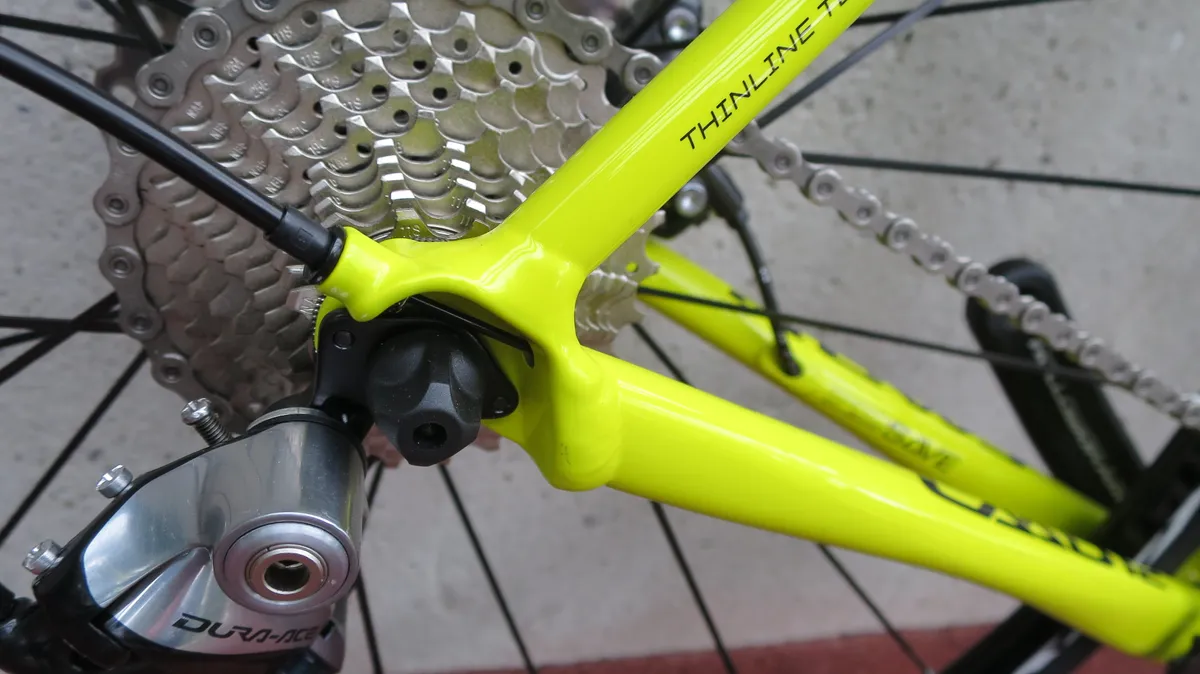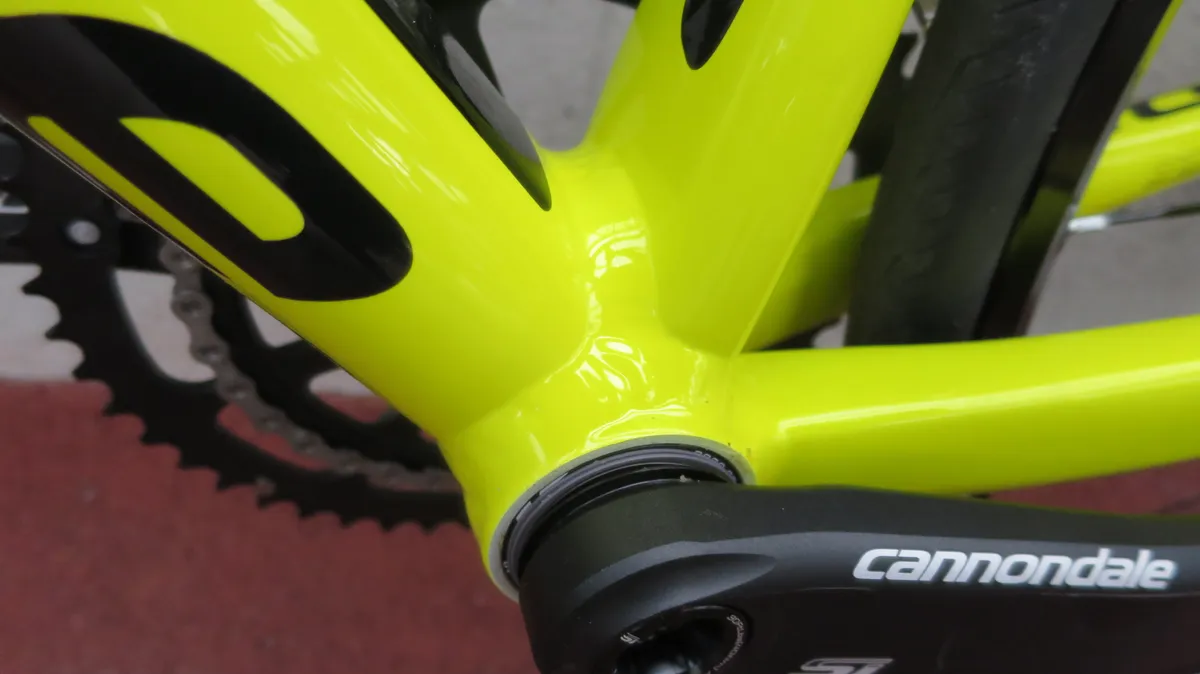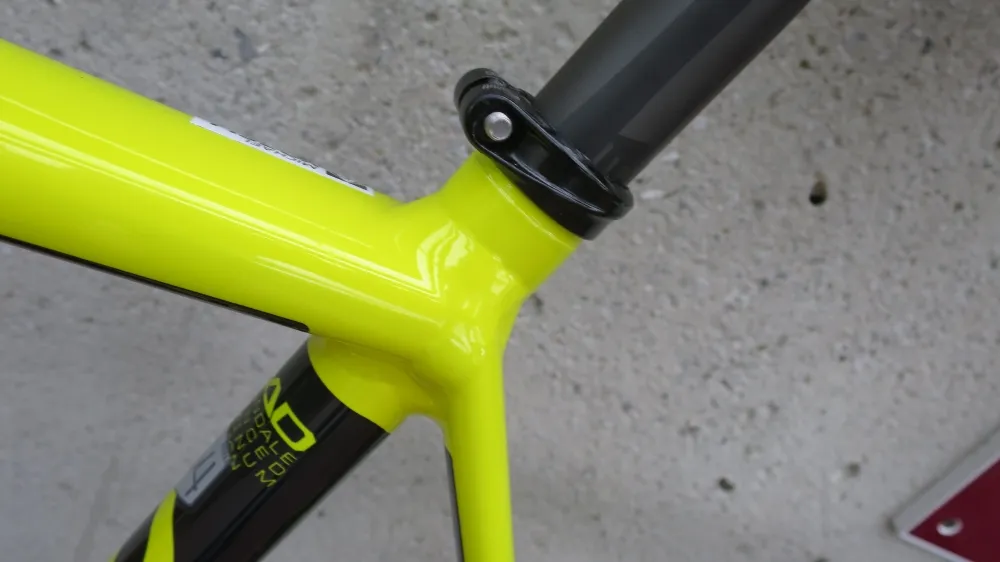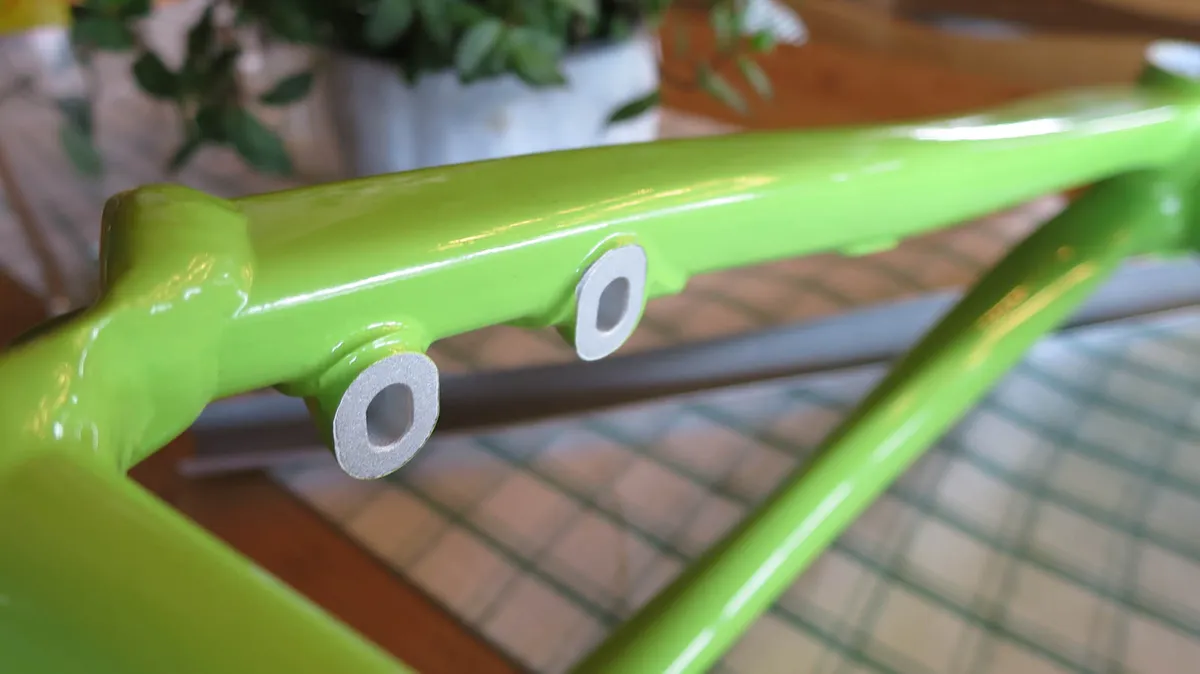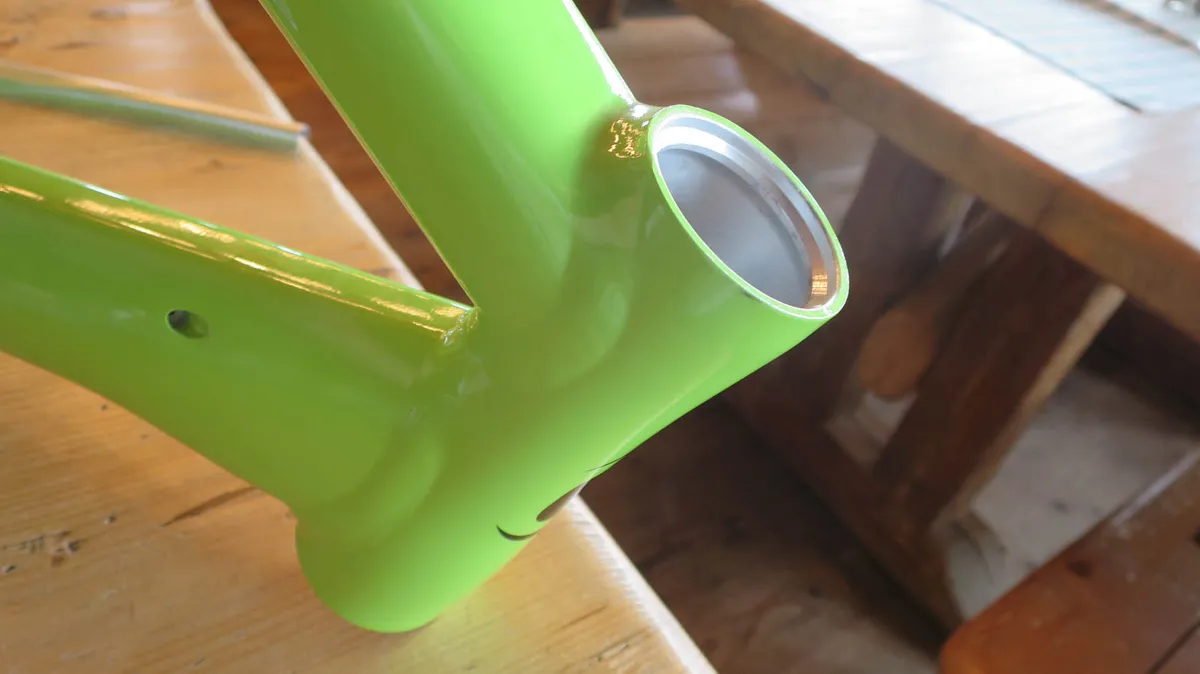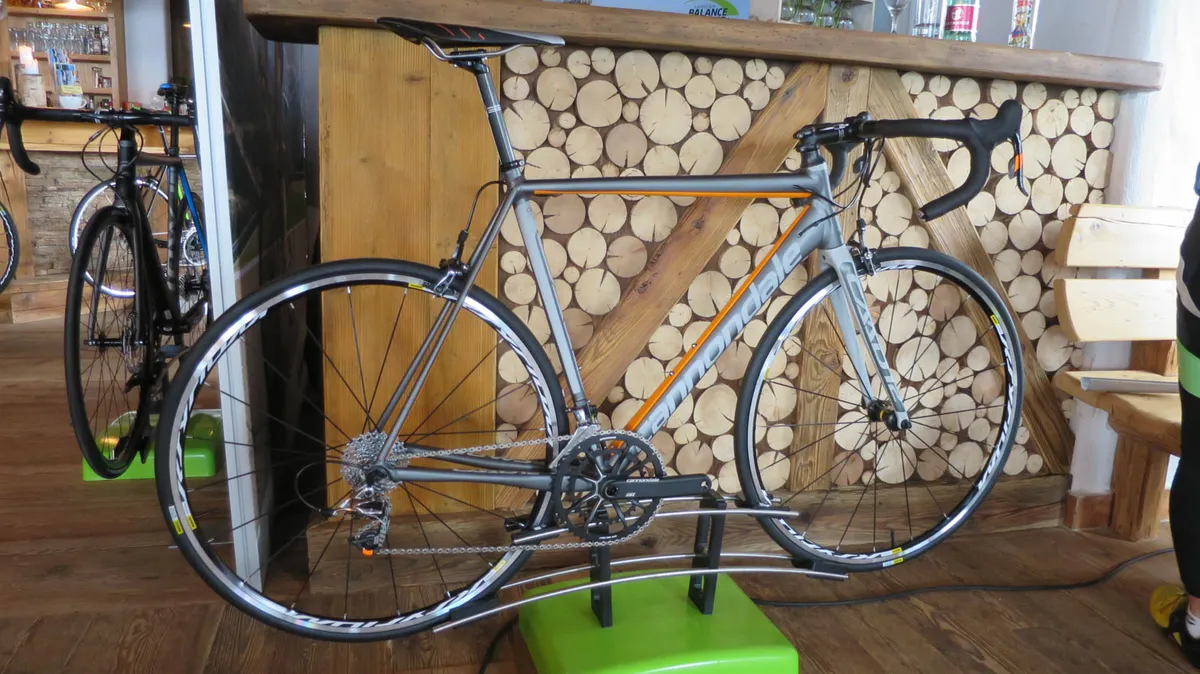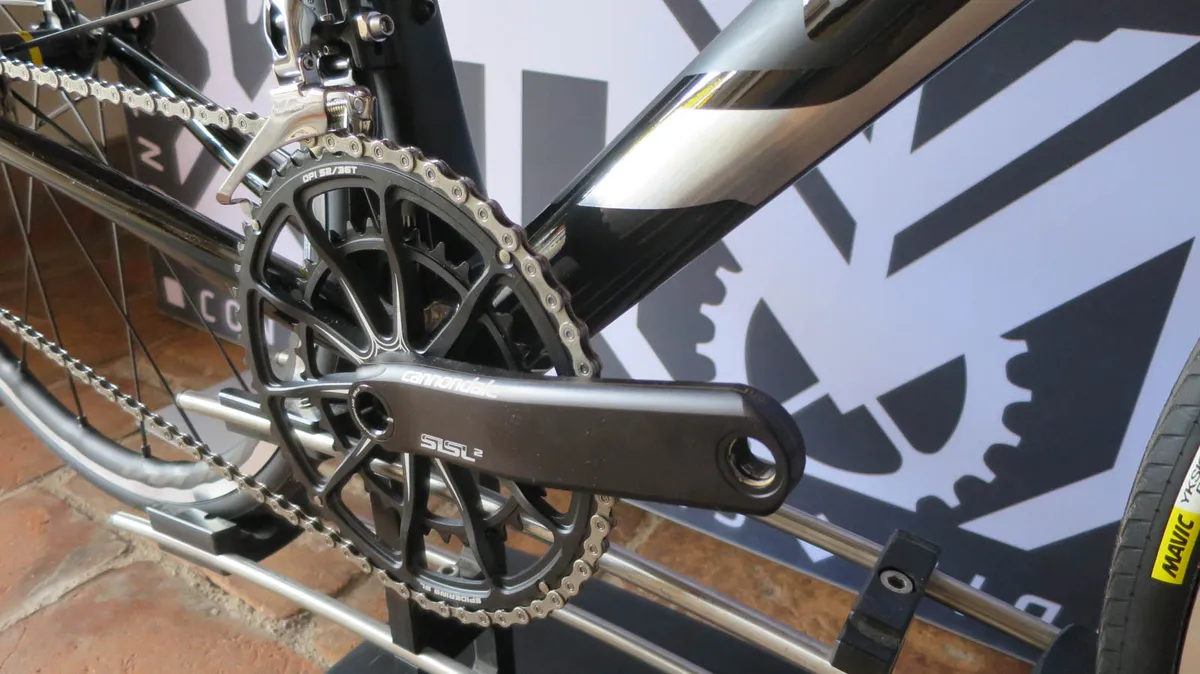In the second part of Cannondale’s 2016 road launch it introduced an all-new alloy platform that will be available in both caliper and disc brake models.
Cannondale has to be considered the originator of aluminium bikes. It was the first to push the material in high-end bike manufacturing back in 1983 and we're now looking at the latest iteration 30 years later.
The last generation CAAD10 received rave reviews, with the disc and the track-specific models also being well regarded. The team at Cannondale noticed that plenty of bikes were being very highly specced with upgrades, not surprising when the CAAD10 weighed just over a kilo, which is approaching carbon-frame-weight. So the CAAD12 aims to out-do the CAAD10 and its latest rivals like BMC’s ALR and Trek’s similarly named Émonda ALR.
Improved stiffness
First up it's 200g lighter (for its system weight – frame, fork, headset, and fork), with a 10 per cent overall stiffness increase and a 20 per cent stiffness improvement in the bottom bracket. All of which results in a 13 per cent increase in the frame's strength to weight ratio, a 30 per cent inrease in the fork's strength to weight ratio and a claimed 50 per cent increase in vertical compliance.
The Cannondale advanced aluminium design – CAAD – has been radically revamped with a new process called ‘Smartformed Alloy’. This is a mix of hydroforming, taper butting, mechanical shaping, 3D forging, and using double-pass smooth welds and post-weld heat treatments.
The process controls the material distribution and tube shapes with a new design protocol called tube flow modelling. This computing-heavy analytical design tool works through hundreds of virtual simulations to find the optimal tube shape and material needed from engineer-designed parameters.
The process has enabled Cannondale to modify tube shapes and thicknesses throughout each individual tube to allow the tube to do exactly what it wants it to do. The tubing cross-sections are the most complex you’ll find on any aluminium frame currently being produced. Take a close look at the frame and all you can see are smooth-flowing, almost organic, changes in profiles. We couldn’t find any crimps, indents, or abrupt shape changes that could create potential stress risers (or potential failure points).
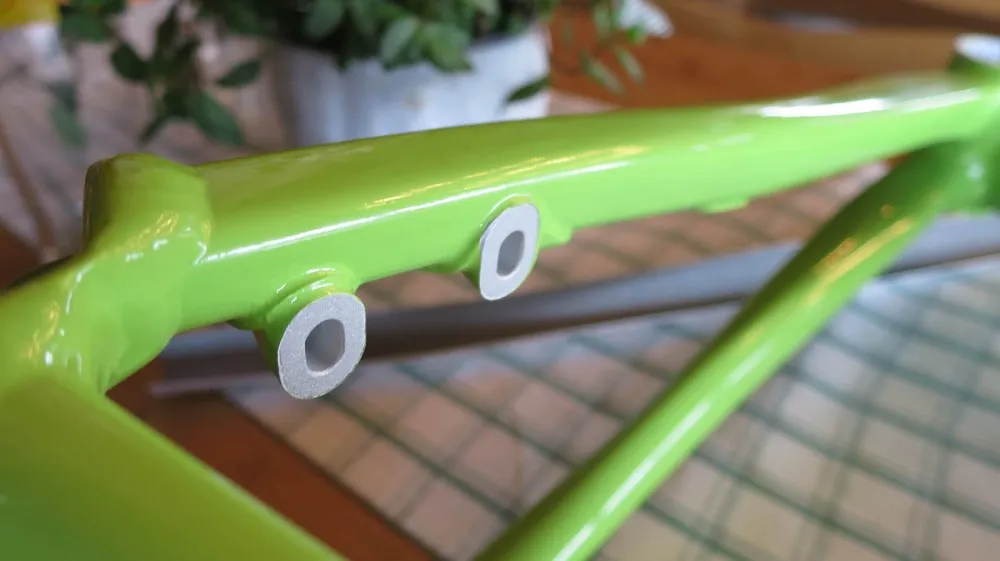
A closer look at the disc brake flat mount
On the disc bike the flat mount disc mount is beautifully realised. The chainstay is CNC-machined with a key slot into which a 3D forged flat-mount is then brazed into the frame. In testing it passed the tandem-braking test. Not surprisingly Cannondale has patented the process. A real surprise though is that the disc model is actually lighter than the caliper model for its frameset. The rim brake model weighs 1098g (52g lighter than CAAD10) and the disc model weighs 1094g (a 206g saving over the previous disc model for just the frame) on fully hardwared-up and painted 56cm frames.
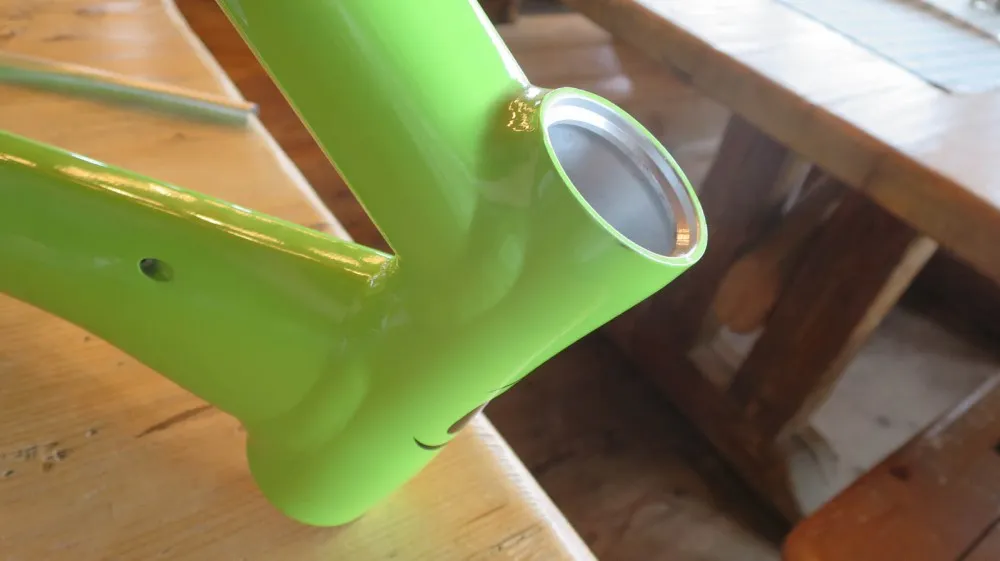
Hourglass head tube
A new hourglass head tube has also been designed using the new analysis tools. It's lighter than the 10’s head tube and under testing showed a 10 per cent increase in head tube stiffness to weight ratio.
The BB30a (73mm) bottom bracket shell and flared delta seat tube come straight from the EVO, as do the asymmetric chainstays, making a 13 per cent increase in stiffness to weight over the previous CAAD10.
The Delta seat tube allows the 12 to feature the same 25.4 carbon post (36 per cent more compliance) as the EVO, adding massively to the comfort of the bike. The alloy frame has been infused with compliance under the ‘Speed Save’ banner (like the EVO) adding a massive 50 per cent more vertical compliance. The fork has been taken from the same mold as the EVO fork, itself giving 6 per cent better lateral stiffness, yet fore-and-aft compliance is up.
System weights
The CAAD12 is 200g lighter with the hi-mod fork over the CAAD10, and 116g lighter with the IM mod fork. Putting all of the weight savings in context, especially compared to the latest alloy competition, shows some interesting results. If you take the base model 105 bike and compare it to Trek’s new Émonda ALR 105 (a bike whose claim to fame is its low weight), which in a 56cm frame weighs 8.56kg – nearly 440g heavier (almost a pound). If you take the base model Trek Émonda SL carbon 105, the CAAD12 is 120g lighter, and we have to admit we never expected that. Things are similar on the disc model with the ‘system’ being 236g lighter (frame, fork, headset, post) than the outgoing CAAD10 disc. Add in Si cranks and you’ll be shaving off around 200g more over the previous bike.
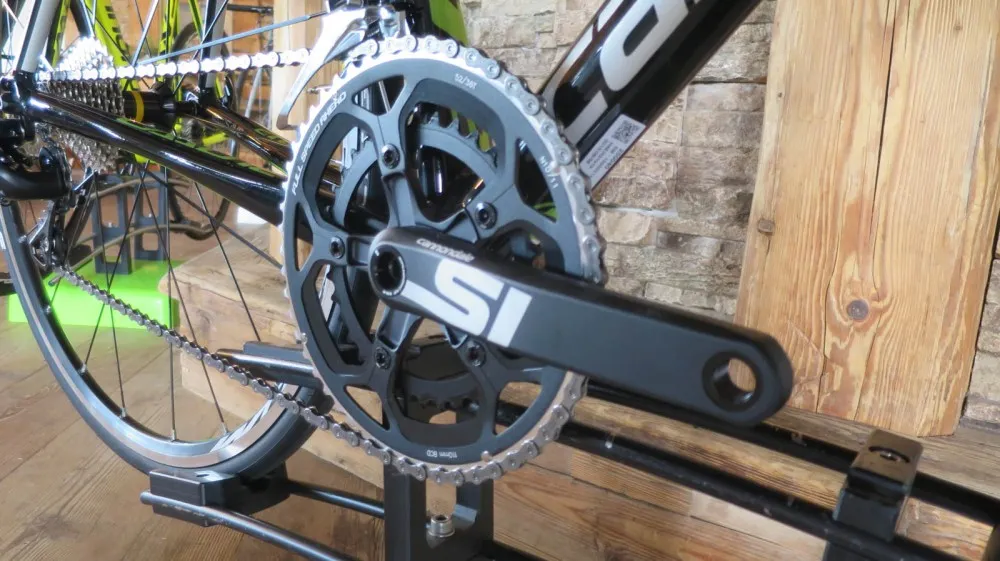
The Cannondale Si crank is lighter than Shimano Ultegra and SRAM Force
It's not just the pricier 12 that gets a chainset upgrade – the lower models get the all-new Cannondale Si crank, the latest creation from the SiSL2 designer Chris Dodman. It’s a solid forged crank that comes in at 735g complete, which is lighter than Ultegra and even SRAM’s carbon Force!
We took the new Dura Ace disc model on a lengthy ride that combined some seriously stiff climbs and a mixture of highly technical and fast flowing descents. We even took a short detour over some gravel mountain roads around the passes in Austria’s Kitzbuhel area. On the climbs the extra weight of the mid-range wheels combined with a 52/36 mid-compact chainset meant plenty of effort was required to maintain anything like swift uphill progress. When the roads tipped downwards however the combination of a poised and fine-handling chassis and highly controllable braking made it a seriously rapid descender. On the lumps and bumps of the gravel farm tracks the CAAD12 was noticeably smoother than its CAAD10 predeccessor. And that’s with the rather slender Kysrium/25c wheel tyre combo. We can’t wait to get the 12 back on home soil and see how it fares on some of our favourite test loop roads.
There are seven models available at launch and we're trying to get confirmation on worldwide pricing as soon as we can. Here's how the line-up looks:
CAAD12 Black Inc. (not available in the UK)
- Cannondale Hollowgram SiSL2 chainset
- Hi-Mod fork (280g)
- Mavic Kysrium Pro WTS
- Save 180g post
- Dura-Ace 9000
- Arione R3 saddle
- 6.74kg/14.8lbs (56cm)
CAAD12 Dura-Ace disc
- CAAD12 Speed Save full carbon disc fork
- Mavic Kysrium Disc WTS
- Cannodale Hollowgram Si cranks
- Shimano Dura-Ace derailleurs
- Ultegra cassette
- R685 shifters
- 785 brakes
- Speedsave carbon post
- Fizik Arione R7 saddle
- 7.64kg (56cm)
CAAD12 Red 22 (not available in the UK)
- Cannodale Hollowgram Si cranks
- SRAM Red 22
- Mavic Kysrium WTS
- Fizik Arione R7
- Speed Save carbon post
- 7.2kg (56cm)
CAAD12 Ultegra disc 3
- Cannondale Hollowgram Si cranks
- Shimano Ultegra
- R685 shifters
- 785/805 hydraulic disc brakes
- Speed Save carbon post
- 8.34kg (56cm)
CAAD12 Ultegra 3
- Cannondale Hollowgram Si cranks
- Shimano Ultegra
- Mavic Aksium Elite WTS
- Cannondale C2 UD carbon post
- Fizik Arione R7 saddle
- 7.5kg (56cm)
CAAD12 105 disc 5
- Cannondale Si cranks
- Maddux/Formula wheels
- Cannodale C2 UD carbon post
- Selle Royal Seta SL saddle
- 8.6kg (56cm)
CAAD12 105 5
- Cannodale Si cranks
- Mavic Aksium wheels
- Shimano 105
- Cannodale C2 carbon post
- Selle Royal Seta SL saddle
- 8.05kg (56cm)
